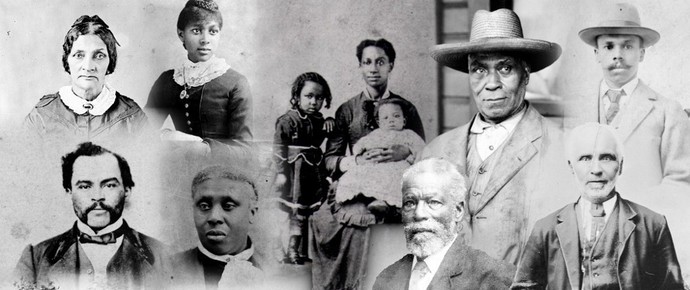
These are some of the intrepid pioneers who made Vancouver Island and Salt Spring Island their home beginning in 1858. Images courtesy of City of Victoria Archives, Royal BC Museum and Archives, and Salt Spring Island Archives
This blog post was written by Fran Morrison – Board Secretary, BC Black History Awareness Society.
Our Story Begins in 1858. 164 years ago, a group of about 800 Black settlers, invited by the governor of the British colony, journeyed to British Columbia. The BC Black History Awareness Society (BCBHAS) has created an online exhibit to share their stories and describe the influence that they and their families had on the province’s historical development and diversity. The exhibit, which officially opened in December 2020, is hosted by Digital Museums Canada.
British Columbia’s Black Pioneers is a collection of short stories about women, men, families, and partnerships that show the intricacies of the events, experiences, and circumstances of everyday life of the Black pioneers, such as winning prizes at the earliest Saanich Fair in 1875, organizing by women in Victoria to raise money to support Black troops in the American Civil War, and confronting discrimination while still achieving many “firsts” in business, politics, and education
The story and history of these Black settlers is an important part of understanding Canada’s multicultural society. Canadians are generally taught that Black people came to Canada to seek relief from the oppression of slavery or, more recently, from repressive socio-economic conditions in their home countries. These stories help round out the picture of Canada by showing how this group of free men and women contributed to the richness of the new, emerging society in the west and were an integral part of its early formation. Knowing the full history of the roles Black people played in the development of Canada results in a better understanding of the advantages of multiculturalism today. As schools are increasingly relying on digital mediums to enhance their curriculum, connecting Black youth to stories of inspiring past achievements results in far-reaching positive outcomes. The Government of Canada recognizes the utility of making these stories available and lists this exhibit as an educational resource on their information page about Canadian Black History Organization
